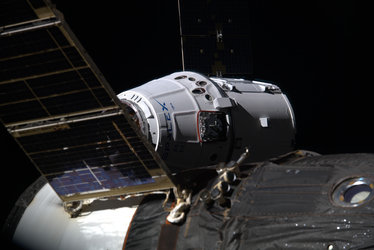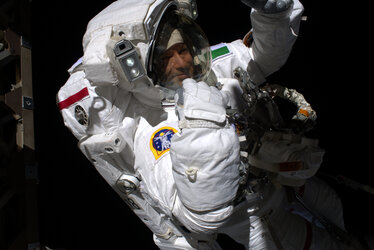Accept all cookies Accept only essential cookies See our Cookie Notice

About ESA
The European Space Agency (ESA) is Europe’s gateway to space. Its mission is to shape the development of Europe’s space capability and ensure that investment in space continues to deliver benefits to the citizens of Europe and the world.
Highlights
ESA - United space in Europe
This is ESA ESA facts Member States & Cooperating States Funding Director General Top management For Member State Delegations European vision European Space Policy ESA & EU Space Councils Responsibility & Sustainability Annual Report Calendar of meetings Corporate newsEstablishments & sites
ESA Headquarters ESA ESTEC ESA ESOC ESA ESRIN ESA EAC ESA ESAC Europe's Spaceport ESA ESEC ESA ECSAT Brussels Office Washington OfficeWorking with ESA
Business with ESA ESA Commercialisation Gateway Law at ESA Careers Cyber resilience at ESA IT at ESA Newsroom Partnerships Merchandising Licence Education Open Space Innovation Platform Integrity and Reporting Administrative Tribunal Health and SafetyMore about ESA
History ESA Historical Archives Exhibitions Publications Art & Culture ESA Merchandise Kids Diversity ESA Brand Centre ESA ChampionsLatest
Space in Member States
Find out more about space activities in our 23 Member States, and understand how ESA works together with their national agencies, institutions and organisations.
Science & Exploration
Exploring our Solar System and unlocking the secrets of the Universe
Go to topicAstronauts
Missions
Juice Euclid Webb Solar Orbiter BepiColombo Gaia ExoMars Cheops Exoplanet missions More missionsActivities
International Space Station Orion service module Gateway Concordia Caves & Pangaea BenefitsLatest
Space Safety
Protecting life and infrastructure on Earth and in orbit
Go to topicAsteroids
Asteroids and Planetary Defence Asteroid danger explained Flyeye telescope: asteroid detection Hera mission: asteroid deflection Near-Earth Object Coordination CentreSpace junk
About space debris Space debris by the numbers Space Environment Report In space refuelling, refurbishing and removingSafety from space
Clean Space ecodesign Zero Debris Technologies Space for Earth Supporting Sustainable DevelopmentLatest
Applications
Using space to benefit citizens and meet future challenges on Earth
Go to topicObserving the Earth
Observing the Earth Future EO Copernicus Meteorology Space for our climate Satellite missionsCommercialisation
ESA Commercialisation Gateway Open Space Innovation Platform Business Incubation ESA Space SolutionsEnabling & Support
Making space accessible and developing the technologies for the future
Go to topicBuilding missions
Space Engineering and Technology Test centre Laboratories Concurrent Design Facility Preparing for the future Shaping the Future Discovery and Preparation Advanced Concepts TeamSpace transportation
Space Transportation Ariane Vega Space Rider Future space transportation Boost! Europe's Spaceport Launches from Europe's Spaceport from 2012Latest

Luca installs BioRock
Thank you for liking
You have already liked this page, you can only like it once!
Heigh-ho, heigh-ho, it is off to work the microbes go.
ESA astronaut Luca Parmitano slides the smallest miners in the universe into the Kubik experiment container on the International Space Station.
For the next three weeks, three different species of bacteria will unleash themselves on basalt slides in the Kubik centrifuge that simulates Earth and martian gravity as well as in microgravity.
Run by a research team from the University of Edinburgh in the UK, the BioRock experiment is testing how altered states of gravity affect biofilm formation – or the growth of microbes on rocks.
Microbes are able to weather down a rock from which they can extract ions. This natural process enables biomining, where useful metals are extracted from rock ores.
Already a common practice on Earth, biomining will eventually take place on the Moon, Mars and asteroids as we expand our understanding and exploration of the Solar System.
The bacteria arrived at the Space Station on the latest Dragon resupply mission in a dehydrated, dormant state.
The organisms are given ‘food’ to restore cell growth and left to grow on basalt at 20°C.
After three weeks, the samples will be preserved and stored at 4°C while they await their return to Earth.
Researchers will map out how altered states of gravity affect the rock and microbes as a whole, as well as which microbe is the best candidate for mining in space. It is hoped these results will shine light on extraterrestial biomining technologies and life-support systems involving microbes for longer duration spaceflight.
Biomining in space can also increase the efficiency of the process on Earth and could even reduce our reliance on precious Earth resources.
In addition to installing the little creatures, Luca is busy with a host of other experiments during his six-month mission, called Beyond.
Listen to the latest episode of the ESA Explores podcast for more science on the Space Station.
Follow Luca and his #MissionBeyond on social media and the blog.
-
CREDIT
ESA -
LICENCE
ESA Standard Licence

Taking photos of BioRock

BioRock

Flight of the Dragon

Beyond mission launch















 Germany
Germany
 Austria
Austria
 Belgium
Belgium
 Denmark
Denmark
 Spain
Spain
 Estonia
Estonia
 Finland
Finland
 France
France
 Greece
Greece
 Hungary
Hungary
 Ireland
Ireland
 Italy
Italy
 Luxembourg
Luxembourg
 Norway
Norway
 The Netherlands
The Netherlands
 Poland
Poland
 Portugal
Portugal
 Czechia
Czechia
 Romania
Romania
 United Kingdom
United Kingdom
 Slovenia
Slovenia
 Sweden
Sweden
 Switzerland
Switzerland

























